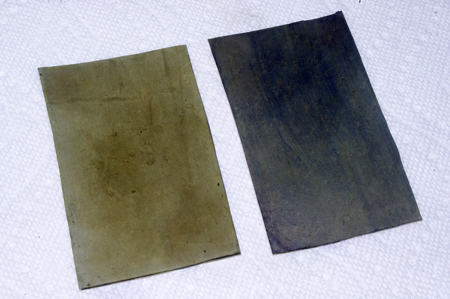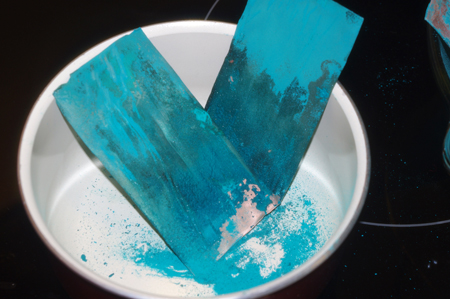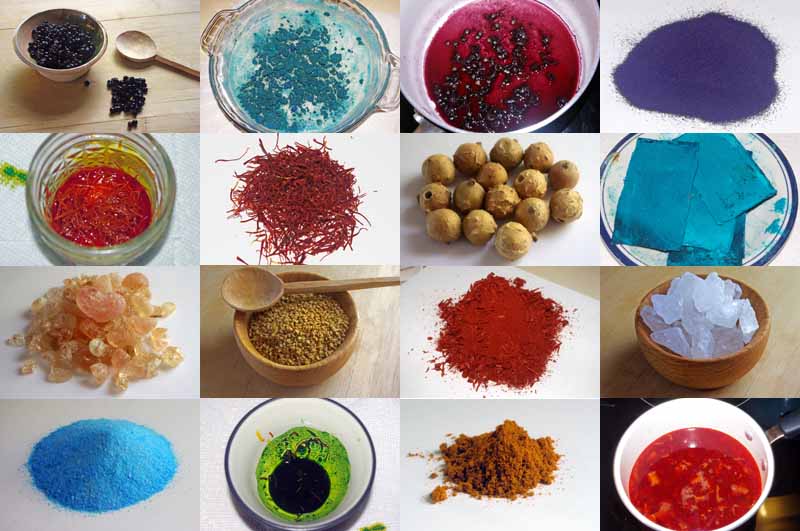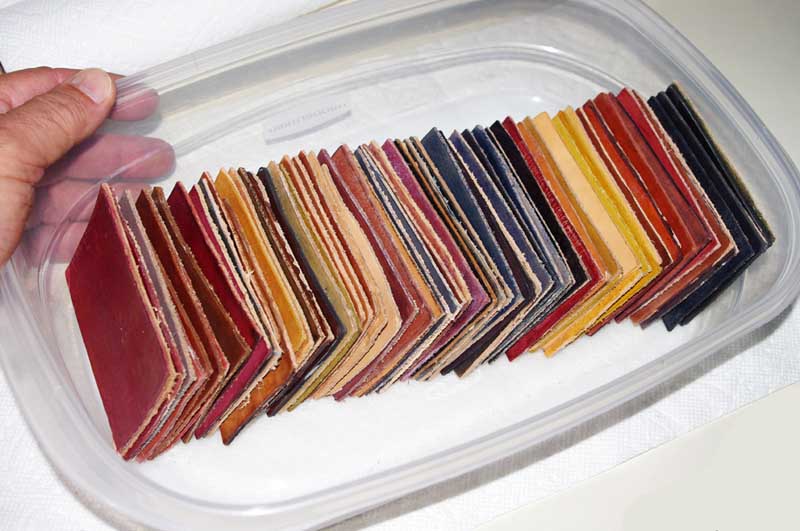Harry, this is a fantastic resource and you are to be commended for your work. A post like this is precisely why myArmoury is just a superior forum and format. Excellent.
| J. Nicolaysen wrote: |
| Harry, this is a fantastic resource and you are to be commended for your work. A post like this is precisely why myArmoury is just a superior forum and format. Excellent. |
Which is why I nominated it as a spotlight post a couple of days ago - I could tell this was going to be a great resource for many folks here. If others feel the same, just hit that little voting/nominating button at the top of the opened post.
Thanks for all the hard work, Harry, and for sharing it with us.
FYI
The colors that you see here are entirely dependent on how you have calibrated the color spectrum of your computer's monitor.
To calibrate the colors of your monitor, go to:
control panel > display
The colors that you see here are entirely dependent on how you have calibrated the color spectrum of your computer's monitor.
To calibrate the colors of your monitor, go to:
control panel > display
Excellent results Harry. What do the original texts refer to where you've used Brazilwood, as Brazilwood is a New World species?
Also, have you tried any of the recipes for dyeing hides listed in the Mappae Clavicula? I've had some good yellow-greens from using home grown weld cooked in urine and a nice purple from oak-galls and cinnabar.
Also, have you tried any of the recipes for dyeing hides listed in the Mappae Clavicula? I've had some good yellow-greens from using home grown weld cooked in urine and a nice purple from oak-galls and cinnabar.
| Matthew Bunker wrote: |
| Excellent results Harry. What do the original texts refer to where you've used Brazilwood, as Brazilwood is a New World species? |
Original texts are quoted above on the original post. Brazilwood (Biancaea sappanis) an old-world species, originally obtained from India.
Brazilwood (Caesalpinia echinata) was also found later in the country that was eventually named after the wood. That's how important the red dye was back at the time. It's funny, the modern Brazil flag doesn't even have any red in it.
Nomenclature has been a major problem in deciphering the old manuscripts.
Brazilwood is not Brazilwood.
Bloodwort is not Bloodwort.
Grain is not grain.
Roman Vitriol is used to refer to either a copper or iron vitriol, depending on the context.
etc., etc.
I've had to trace nomenclature back over the centuries to determine the meanings that were in use at the time. So much has changed. I've even discovered that other people's often-quoted interpretations are wrong! (e.g., I believe that the person who translated the Segreti into English got the bloodwort species wrong in the translation.)
Likewise with units of measurement that are quoted in the old manuscripts. An ounce not only varied with time, but at the same time an ounce in Milan was wildly different from an ounce in Venice.
| Matthew Bunker wrote: |
| Also, have you tried any of the recipes for dyeing hides listed in the Mappae Clavicula? I've had some good yellow-greens from using home grown weld cooked in urine and a nice purple from oak-galls and cinnabar. |
I haven't heard of the Mappae Clavicula, but I will certainly look into it!
I did not mess around with any of the toxic substrates (cinnabar, lead, arsenic, etc.)
There are no recipes in the above documents that I quoted that use weld for a leather dye. I did try numerous experiments with fresh dried weld with a variety of concentrations and mordants (gall tannin, roche alum, Cream of Tartar, etc.), and it did not work on leather. All I got was leather color. I haven't tried the urine dye bath, but Turmeric is such a bright yellow that I've long given up on weld.
Apparently weld is a magnificent textile dye, but a very poor leather dye. This is a theme that is almost universal - textile dyes generally make for poor leather dyes.
Weld can yield a good colour, but the preparation instructions are quite specific and more complex than the process required when dyeing textiles.
The Mappae is the only early medieval source book for leather dyeing recipes. I've got a copy in Latin which I translated into English but the leather dye recipes are collected here:-
http://www.elizabethancostume.net/dyes/mappae.html
The Mappae is the only early medieval source book for leather dyeing recipes. I've got a copy in Latin which I translated into English but the leather dye recipes are collected here:-
http://www.elizabethancostume.net/dyes/mappae.html
| Harry Marinakis wrote: |
|
Original texts are quoted above on the original post. Brazilwood (Biancaea sappanis) an old-world species, originally obtained from India. . |
Ahh, brezel wood!
| Matthew Bunker wrote: |
| Ahh, brezel wood! |
It has a lot of different names, even in the same manuscript there are multiple different names. Brazil, brasil, brezel, etc.
Looking at the Mappae recipes, you see the same problem as in the Plictho and Segreti - terminology. You can't assume anything, and you have to trace each term back to the year in which it was written.
Last edited by Harry Marinakis on Sun 15 Apr, 2018 10:30 am; edited 2 times in total
I've looked into reproducing Murex purple but the snail extract is running at about $2.4 million per pound these days
http://shop.kremerpigments.com/en/pigments/kr...le-genuine
http://shop.kremerpigments.com/en/pigments/kr...le-genuine
Harry,
Could it be at all feasible to try to farm the Pupura Lapillus on a large scale to produce your own die? It strikes me that the initial outlay could be expensive, but once the operation was up and running, it would probably be much more affordable in the long term than purchasing the dye from a store. Even better would be if someone could selectively breed the snails for dye output or else modify the snail in some other way to increase the amount of dye per snail.
Could it be at all feasible to try to farm the Pupura Lapillus on a large scale to produce your own die? It strikes me that the initial outlay could be expensive, but once the operation was up and running, it would probably be much more affordable in the long term than purchasing the dye from a store. Even better would be if someone could selectively breed the snails for dye output or else modify the snail in some other way to increase the amount of dye per snail.
| Matthew Bunker wrote: |
| Excellent results Harry. What do the original texts refer to where you've used Brazilwood, as Brazilwood is a New World species? |
More information on this matter:
The species Caesalpinia sappan (also called brazilwood, sappanwood, or redwood) was obtained from India, Ceylon, and the Far East during the Middle Ages. After settlement of the New World, brazilwood (Guilandina echinata) was discovered in South America. The red dye is the same.
I have been able to obtain some more blue leather dyes from the medieval manuscripts; the base ingredient is indigo.
 Attachment: 62.01 KB
Attachment: 62.01 KB


And here is a ranges of purple leather dyes that were produced from a variety of ingredients such as brazilwood, buckthorn berries, and lac insects.
 Attachment: 49.73 KB
Attachment: 49.73 KB


I think I understand why there are so few brown leather dyes in medieval dyer's manuscripts.
During the Middle Ages, the ancient tripartite color scheme of red, white, and black was replaced by a new order that added three more colors: blue, green, and yellow.
White and yellow were associated with one-another on one side of the color spectrum, with all of the other colors on the opposite side. Blue was considered to be very closely aligned with black and green. Red was considered the opposite of blue as well as the opposite of white and yellow. Purple was considered to be a red, and was closer to black than to blue.
According Eraclius (10th century), the primary colors were black and white, and then there were the intermediate colors of red, green, yellow, purple, prasinus (leek green), azure, and Incicus (indigo).
All of the other colors (such as brown, orange, pink, and grey) were generally ignored, at least in hierarchy of color, and had little symbolic meanings. Brown, orange, and russet were described as being the ugliest colors of them all.
Brown was not really a color in the medieval hierarchy of colors. Rather, brown was the color of things that were not colored. Brown was the color of natural undyed clothing that was worn by the lowest ranks for manual labor. Formal religious proclamations of the early Middle Ages that defined color symbolism did not even mention the color brown. However, after the Protestant Reformation in the 1500s, brown became an important symbol of modesty, and brown clothing was worn by monks and the pious.
So.... Brown was an unpopular color. One did not dye things brown. Brown was the color of things that were not dyed.
During the Middle Ages, the ancient tripartite color scheme of red, white, and black was replaced by a new order that added three more colors: blue, green, and yellow.
White and yellow were associated with one-another on one side of the color spectrum, with all of the other colors on the opposite side. Blue was considered to be very closely aligned with black and green. Red was considered the opposite of blue as well as the opposite of white and yellow. Purple was considered to be a red, and was closer to black than to blue.
According Eraclius (10th century), the primary colors were black and white, and then there were the intermediate colors of red, green, yellow, purple, prasinus (leek green), azure, and Incicus (indigo).
All of the other colors (such as brown, orange, pink, and grey) were generally ignored, at least in hierarchy of color, and had little symbolic meanings. Brown, orange, and russet were described as being the ugliest colors of them all.
Brown was not really a color in the medieval hierarchy of colors. Rather, brown was the color of things that were not colored. Brown was the color of natural undyed clothing that was worn by the lowest ranks for manual labor. Formal religious proclamations of the early Middle Ages that defined color symbolism did not even mention the color brown. However, after the Protestant Reformation in the 1500s, brown became an important symbol of modesty, and brown clothing was worn by monks and the pious.
So.... Brown was an unpopular color. One did not dye things brown. Brown was the color of things that were not dyed.
I am also started to produce green leather dyes, although they are pretty unimpressive. It is very difficult to produce a green leather dye. But I am still working on it.
Both of these olive green dyes were produced with ripe buckthorn berries soaked in potash. The leather on the right was overdyed with a minute amount of indigo.
 Attachment: 137.59 KB
Attachment: 137.59 KB

Both of these olive green dyes were produced with ripe buckthorn berries soaked in potash. The leather on the right was overdyed with a minute amount of indigo.

I am especially interested in the green leather dyes, as green is a predominant color for scabbards in Ottonian and some late Carolingian or late 10th/early 11th century English manuscripts. The green is always a strong, rather vibrant green. Does green ink take to leather the same way it takes to scrapped velum, as opposed to a soaked dye?
It's also possible that the scabbard coverings are fabric--how do the listed green dyes take to cloth?
It's also possible that the scabbard coverings are fabric--how do the listed green dyes take to cloth?
| Kai Lawson wrote: |
| I am especially interested in the green leather dyes, as green is a predominant color for scabbards in Ottonian and some late Carolingian or late 10th/early 11th century English manuscripts. The green is always a strong, rather vibrant green. Does green ink take to leather the same way it takes to scrapped velum, as opposed to a soaked dye?
It's also possible that the scabbard coverings are fabric--how do the listed green dyes take to cloth? |
I am reproducing leather dyes in medieval manuscripts from the 8th to the 16th centuries. I have looked through almost all of the manuscripts that have been translated into English, and I have not seen any leather dyes that use any ink, of any color.
The vast majority of leather dyes are brushed onto the leather. Soaking leather is rare. All of the recipes that require soaking the leather are for red dyes (madder, brazilwood, kermes, and lac) and black dyes (iron-tannin-acid salts).
Fabrics and textiles can be dyed in brilliant colors. I know that some scabbards were wrapped in velvet, so why not other fabrics?
Stay tuned for more adventures in green. I am still trying to mass produce verdigris so that I can start experimenting with the verdigris greens. It takes a few months to make a few grams of the stuff, unless you run a big operation.

Thank you for this, Harry. This has been very informative. I actually have mostly black and brown scabbards and hilts, and always saw brightly decorated scabbards as gaudy. But, logically looking at reconstructions the medieval sense of style is much different than our modern sensibilities would dictate. And your reasoning for "brown" being synonymous with basic is completely logical.
The fact that dyes were mostly brushed on makes sense with the labor involved in producing a modicum of color and mordent. Drum dying would be more thorough, but wasteful of the more valuable colorants (you'd not only be dying both the flesh and grain sides, but also wasting color on the trimmings and waste.) And if you drum died an entire hide it limits what projects you might want use it on.
I always wanted a bright blue scabbarded sword, and this thread has motivated me toward meeting that end goal. I have been planning on buying a Prince with bronze pommel and think a royal blue scabbard would be a great compliment to it.
-Terry
The fact that dyes were mostly brushed on makes sense with the labor involved in producing a modicum of color and mordent. Drum dying would be more thorough, but wasteful of the more valuable colorants (you'd not only be dying both the flesh and grain sides, but also wasting color on the trimmings and waste.) And if you drum died an entire hide it limits what projects you might want use it on.
I always wanted a bright blue scabbarded sword, and this thread has motivated me toward meeting that end goal. I have been planning on buying a Prince with bronze pommel and think a royal blue scabbard would be a great compliment to it.
-Terry
I just completed a 4-year research project into medieval European leather dyes. During this time, I completed the following:
-Reviewed 16 medieval dyerís manuscripts from the 8th to 16th centuries
-Deciphered all known (about 130) medieval leather dye manuscript recipes
-Obtained or manufactured about 60 medieval substrates and reagents
-Re-created 65 ancient medieval leather dyes from ancient dye recipes
-Wrote a 500-page treatise on medieval European leather dyes and the associated chemistry
During the past 4 years I performed about 300 leather dye experiments while trying to decipher and re-create medieval leather dyes. The recipes in the manuscripts often do not offer step-by-step instructions. Rather, the recipes provide only a general overview of the procedures. Many critical steps are often omitted from the recipes, which is why the dyes are so difficult to re-create. The medieval terminology in the recipes is also rather obscure, allegorical, and metaphorical.
I think that I am now one of the world's top experts on medieval leather dyes.
Anyway, forget about everything else that Iíve said previously. This is my final and definite word on medieval leather dye colors.
 Attachment: 86.68 KB
Attachment: 86.68 KB

 Attachment: 81.91 KB
Attachment: 81.91 KB

-Reviewed 16 medieval dyerís manuscripts from the 8th to 16th centuries
-Deciphered all known (about 130) medieval leather dye manuscript recipes
-Obtained or manufactured about 60 medieval substrates and reagents
-Re-created 65 ancient medieval leather dyes from ancient dye recipes
-Wrote a 500-page treatise on medieval European leather dyes and the associated chemistry
During the past 4 years I performed about 300 leather dye experiments while trying to decipher and re-create medieval leather dyes. The recipes in the manuscripts often do not offer step-by-step instructions. Rather, the recipes provide only a general overview of the procedures. Many critical steps are often omitted from the recipes, which is why the dyes are so difficult to re-create. The medieval terminology in the recipes is also rather obscure, allegorical, and metaphorical.
I think that I am now one of the world's top experts on medieval leather dyes.
Anyway, forget about everything else that Iíve said previously. This is my final and definite word on medieval leather dye colors.


Last edited by Harry Marinakis on Mon 06 Jan, 2020 3:56 am; edited 7 times in total
RED
These are the colors that can be achieved with medieval leather dyes, made from brazilwood, cochineal, and madder root
 Attachment: 79.83 KB
Attachment: 79.83 KB

These are the colors that can be achieved with medieval leather dyes, made from brazilwood, cochineal, and madder root

Page 2 of 4
You cannot post new topics in this forumYou cannot reply to topics in this forum
You cannot edit your posts in this forum
You cannot delete your posts in this forum
You cannot vote in polls in this forum
You cannot attach files in this forum
You can download files in this forum
All contents © Copyright 2003-2006 myArmoury.com — All rights reserved
Discussion forums powered by phpBB © The phpBB Group
Switch to the Full-featured Version of the forum
Discussion forums powered by phpBB © The phpBB Group
Switch to the Full-featured Version of the forum